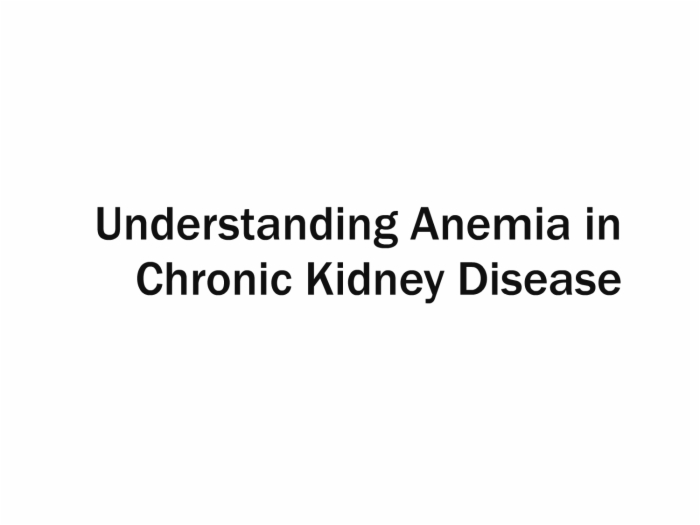SMi Source lesson Nephrology: Chronic Kidney Disease: Anemia Consumer Awareness has the following microlearning topics
1. Understanding Anemia in Chronic Kidney Disease


Lesson Nephrology: Chronic Kidney Disease: Anemia Consumer Awareness teaches these concepts
Understanding Anemia in Chronic Kidney Disease, How Can I Tell If I Have Anemia?
Understanding Anemia in Chronic Kidney Disease, Why Do Symptoms Occur?
Understanding Anemia in Chronic Kidney Disease, What's the Role of Blood?
Understanding Anemia in Chronic Kidney Disease, What Are Red Blood Cells?
Understanding Anemia in Chronic Kidney Disease, How Do Red Blood Cells Carry Oxygen?
Understanding Anemia in Chronic Kidney Disease, Where Do Red Blood Cells Come From?
Understanding Anemia in Chronic Kidney Disease, What Happens When Kidneys Don't Work?
Understanding Anemia in Chronic Kidney Disease, How Can the Production of RBCs Be Increased in People with CKD?
Understanding Anemia in Chronic Kidney Disease, What Is the Role of Iron?
Lesson Nephrology: Chronic Kidney Disease: Anemia Consumer Awareness addresses these key points
Symptoms of anemia:
- Lack of energy
- Shortness of breath
- Weakness
- Dizziness or fainting
- Rapid heartbeat
- Feeling cold
- Sadness at missing out on everyday activities
- Loss of concentration
All tissues and cells of the body need oxygen for energy.
Anemia:
- Trouble delivering oxygen throughout body
- Without enough oxygen, muscles and brain may not function well
- Difficulties in doing daily activities
The heart:
- Can be affected by anemia
- Has to work even harder to deliver oxygen where it’s needed, since blood carries less oxygen
- May increase risk of heart problems
Role of blood:
- Spreads the oxygen from the lungs to the rest of the body through blood vessels
- Transports the waste products the body produces to the kidneys to be removed
Red blood cells:
- Main component of the blood
- Responsible for carrying oxygen
- Pick up oxygen in lungs and deliver it to all organs, tissues, and cells
Hemoglobin:
- Substance within red blood cells
- Holds the oxygen inside the cell
The amount of hemoglobin in your blood is a primary indicator of anemia.
The National Kidney Foundation recommends that people with CKD maintain a hemoglobin level between 11 and 12 g/dL.
Normal cycle for red blood cell production and oxygen delivery:
- Kidneys constantly monitor oxygen levels in blood
- When oxygen levels fall, kidneys request more red blood cells
- This request is carried from the kidney to the bone marrow through a hormone called erythropoietin
When kidneys don’t work:
- They don’t produce as much erythropoietin as they used to
- Bone marrow does not receive enough requests to make red blood cells
- If total number of red blood cells falls too low, you develop anemia
Injectable medications:
- Can help increase erythropoietin levels in patients with anemia due to CKD
- Help increase the number of requests from the kidney to the bone marrow, allowing for more red blood cells to be produced
Role of iron:
- Needed to make hemoglobin
- Enough iron makes healthy red blood cells
- Determines how much oxygen the red blood cells carry
Lesson Nephrology: Chronic Kidney Disease: Anemia Consumer Awareness is built from these main references. Log into SMi Source for a complete list and details.
Amgen brochure MC18898-C, 30M/6-03, P35230-4, 2003.
Amgen brochure MC19892-A, 50M/10-03, P50438, 2003.
Marieb EN, Human Anatomy & Physiology, 6th ed., Pearson Education, 2004.